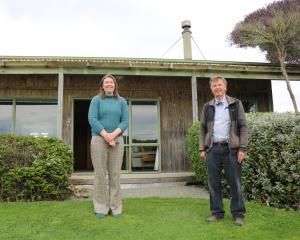
This week, the Ministry for Culture and Heritage met representatives of the Waitaki District Council and Dunedin City Council, after similar meetings in Auckland, Wellington, Christchurch and Invercargill,
to complement a survey completed by more than 200 stakeholders as it reviews New Zealand’s system for protecting heritage buildings.
Mr Kircher called the meeting positive and said both Waitaki and Dunedin led by example in maintaining historic buildings, yet there were "some pretty obvious examples around" of historic buildings falling into a state of disrepair.
"That’s a serious concern right around New Zealand," Mr Kircher said.
"I don’t think there’s too many people that want to force owners to go and do up a building when there’s actually no economic use for it — all that’s going to do is scare people off from owning buildings — there needs to be a carrot there and in some cases that might be central government funding."
There was some funding available through the government’s Heritage Earthquake Upgrade Incentive Programme funding, he said, "but we think central government does need to step up even more and help owners of heritage buildings, because if they’ve got good heritage values, it’s something of significance to all of us".
The council owned several Thames St buildings of significant heritage value and had just bought 24 Thames St — next to its Category 1 Thames St headquarters, the former Oamaru chief post office — "partly as an investment, but part of that is tidying that up and improving its heritage value".
Dunedin Mayor Dave Cull said he looked forward to the outcome of the ministry’s review. He believed Dunedin had "an excellent track record" for preservation of built heritage through collaboration between the council, building owners and the community.
"There are opportunities, however, for further improvement. For example, we would like to see improvements to legal tools available to require heritage building owners to maintain their properties to a standard that avoids irreversible damage. We would also like to see further guidance and oversight provided around Crown management of their own heritage buildings."
In his submission to the ministry, Mr Cull noted the city listed 789 scheduled heritage buildings in its district plan and said 24 buildings were "at risk of loss" due to neglect and disuse while another 64 were "vulnerable to loss". He called for a streamlined process so all entries in the New Zealand heritage list were scheduled on councils’ district plans with a prescribed minimum level of protection. He also called for a mechanism for councils to "take action" where buildings had deteriorated and were at risk of demolition.
Ministry for Culture and Heritage heritage policy manager Stefan Corbett called the Dunedin meeting "really good" and said this week the ministry met advocacy groups, owners and developers, and local iwi, as well as councils.
While there was "concern that the preventable and irreversible loss of heritage buildings is occurring in New Zealand" it was "not proven", he said.
"If you’re going to put advice up to the Government it has to be empirical, it has to be based on data, so we’re just trying to get a full picture," he said.
And now the ministry was listening.
Heritage New Zealand Otago-Southland area manager Jonathan Howard said the workshop he attended was "constructive and positive".












